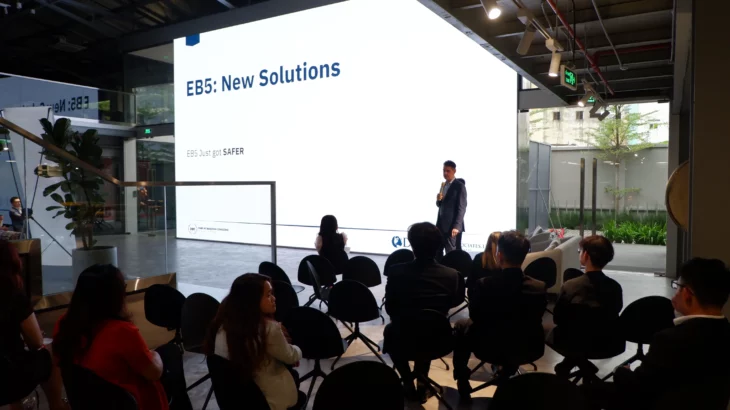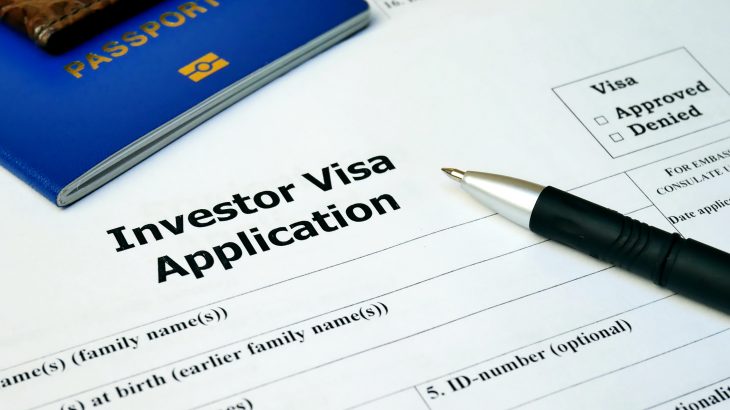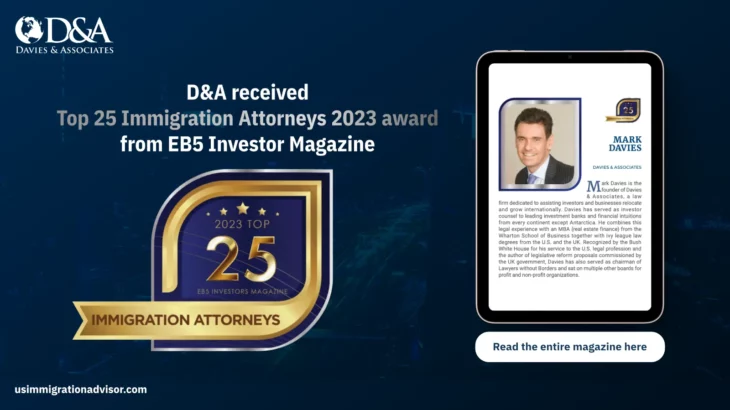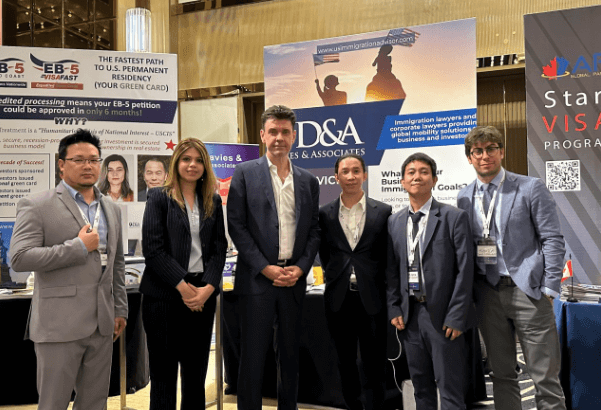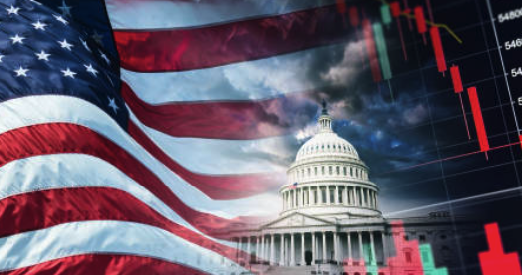There are two kinds of U.S. investor visa: (1) the non-immigrant E-2 investor visa; and (2) the immigrant EB-5 visa.
An EB5 Visa USA loan refers to a loan that’s taken by the petitioner to fund part or all their EB5 investment. The same principals generally apply for financing an E2 investor visa.
Can I Use a Loan for a U.S. Investor Visa Application?
Yes.
Loans are one of the authorized forms of financing that an investor may use. Investors commonly use loans to fund EB-5 and E-2 qualifying investments.
Loans can be secured or unsecured. Home Equity Lines of Credit (HELOC) can allow homeowners easy access to EB5 financing.
You must file documentation that evidences the bona fides of the loan with USCIS. This includes: (1) the lender’s source of funding*; and (2) the method by which money was transferred from the lender to the EB-5 investor.
* Loans sourced from a bank are exempt from this rule. Investors are not required to show where a bank procured loaned funds.
Why are Loans for EB-5 Popular?
In 2022 the RIA raised the minimum investment amount for EB5 from $500,000 to $800,000. As a result, more people wanted to borrow money to finance their EB5 investor visa application.
I. Finding an E-2 or Eb-5 Visa Lender
There are generally four sources of E2 and Eb5 qualified loans: 1) private loans; 2) institutional loans, including bank loans; 3) loans from EB5 Regional Centers; and 4) seller financing available in both E2 and EB5 Direct cases.
(1) Private Loans
Many Eb5 investors borrow money or take gifts from family. A family member lending or gifting funds for an investor visa application will have to carefully document the lawful source of those funds.
Other private lenders commonly include friends and business associates.
(2) Institutional Loans
Investors can also borrow money from a bank or financial institution by using their home or assets as Collateral. HELOCs are an especially popular source of financing.
Careful attention needs to be paid to the loan documentation. The purpose clause in a loan agreement needs to be carefully reviewed. A purpose clause that does not permit borrowing for EB5 purposes will likely result in a visa denial.
(3) Regional Center EB-5 Loans
More recently a number of Regional Centers have started to finance Eb5 transactions.
Caution needs to be taken when borrowing funds from a Regional Center. While some Regional Center loan programs do qualify for EB-5 purposes the status of some other EB5 loan programs is currently undetermined.
(4) Seller Financing
Direct EB5 investors and E-2 investors can often purchase an existing business using seller financing.
A potential issue with seller financing is whether or not the investor is “at risk”. In assessing whether or not an E-2 investor is at risk the US government applies a proportionality test. Using this proportionality test the US government evaluates the overall cost of the business against the investment made.
Caution needs to be taken to ensure that the seller financing is not secured by the subject business or the assets comprising that business. As stated in the Foreign Affairs Manual:
“Indebtedness such as mortgage debt or commercial loans secured by the assets of the enterprise cannot count toward the investment, as there is no requisite element of risk. For example, if the business in which the applicant is investing is used as collateral, funds from the resulting loan or mortgage are not at risk, even if some personal assets are also used as collateral.”
II. Secured or Unsecured EB5 Loan?
All loans are either secured by Collateral or unsecured. The investor needs to secure a secured loan with their personal property (Collateral). An unsecured loan does not require any Collateral.
Most investor visa lenders require Collateral to secure loans used for EB5 funding, unsecured loans are hard to find. If unsecured loans are available they are likely to have a much higher interest rate or other charges than a secured loan,
What is Collateral for a Loan?
“Collateral” refers to the assets used to secure a secured loan. If the borrower does not repay the loan as agreed, the lender will sell the Collateral to pay the loan.
EB-5 Visa Loan Requirements and E2 Visa Secured Loan Requirements
There are several requirements for a secured loan to be qualified as EB-5 investment funds. These requirements include:
The loan must be secured by the investor’s assets or property. The EB5 investor can only use personal property (Collateral) they own to secure an EB5 loan. EB5 qualifying personal property (Collateral) can include: Stocks and other securities, gold and jewelry, real estate and other assets.
Source of Funds for Collateral. An EB5 investor must prove how the Collateral securing an EB5 Loan was purchased. The Eb5 investor must also prove how the funds used to purchase the Collateral were lawfully earned.
Value of Collateral. The value of the investor’s Collateral must be equal to or more than the loan amount.
Perfection of Security Interest and Mortgages. The lender’s security interest in the Collateral must be perfected. In simple language that means that the mortgage or other loan used to secure real estate must be properly registered as required by law.
The investor must be the principal borrower of the loan and must be fully responsible for its repayment. The loan must be under the investor’s name and they must be solely liable for its repayment.
Investor is “At Risk”. An investor places their personal assets “at risk” as Collateral in a secured EB5 loan or E2 loan. The investor clearly meets the “at risk” requirement.
Purposes of Loan. For the EB5 visa program the capital investment funded by the EB5 loan must placed “at risk” and create ten jobs. Investors accomplish this by investing the loan proceeds in an EB-5 project.
Acceptable kinds of collateral for an EB-5 Visa loan
USCIS allows EB-5 investors to use any form of collateral to secure their loan as long as the loan is secured by the investor’s assets. Property holdings, gold, real estate, cash, and equipment are some examples of acceptable kinds of personal assets that investors can use as collaterals.
Eb5 projects require an investment of USD 800,000 or USD 1,050,00 and must generate at least 10 new direct and indirect jobs.
Land-Based Loan Transactions
If you are going to use a bank loan secured by land, you will need to provide copies of all relevant loan documents. This documentation includes the full purchase documentation for the land including an explanation of how funds to purchase the land were earned. Investors should also be willing to explain how payments were made on any mortgage used to acquire the property.
The loan must also comply with the laws of the country where the land is located.
Mortgages and Remortgages
Investors may also remortgage or refinance using a mortgage with a fixed or variable interest rate. A bank can quickly determine if a house or a condominium is qualified for a cash-out refinance. The loan can be quickly arranged with the proceeds reaching the investor’s account within 45 days, subject to the appraisal and the lending review processes.
E2 Visa and EB-5 Visa Unsecured Loan Advantages
An unsecured loan has a few advantages:
No Source of Funds. A loan from a recognized financial institution has no source of funds requirement. As an unsecured loan has no Collateral there no requirement to trace the funds used to purchase Collateral. An unsecured loan which is not from a recognized financial institution will require proof of how the lender earned the funds to make the loan.
Assets not at Risk. Because the loan is unsecured the investor’s assets are not immediately placed at risk in the event the loan is not re-paid.
Investor is “At Risk” for EB5 Purposes. USCIS traditionally took the view that investors using unsecured loans to finance EB5 investments were not “at risk” as required by EB5 law. As a result of a court case decided in October 2020 the position has changed. Unsecured loans can now be used to finance EB5 investments. As the court decision is fairly recent there is little data on how the USCIS is deciding cases where foreign investors are relying on unsecured loans.
III. EB-5 Visa Loan Repayment Terms
Loan Interest Rate
Loan interest is the amount that a lender charges to a borrower for lending the borrower the money. To calculate loan interest, multiply the interest rate by the outstanding loan balance. Market conditions and credit standards determine interest rates for EB5 Visa loans.
A wide variety of loan products on the market that meet EB5 needs. These can include 30 and 15 year fixed repayment terms using various fixed and adjustable interest rates.
At the time of writing, an investor can borrow $800,000 at a 5% interest rate by using a $1 million home as collateral. You can then apply the USD 800,000 loan proceeds towards the required EB-5 investment and the associated fees.
Other Fees
In addition to the interest cost some loans may entail other costs. These costs may include arrangement fees and pre-payment penalties.
Lending Rates from Financial Institutions
There are a lot of factors that can affect lending rates. These factors can include a client’s banking relationship and the liquidity and risk level of the asset among others. The lending rate can depend also on a bank’s own cost of capital or external factors outside its control.
While applicants may want to pay off their loan as quickly as possible to reduce the interest cost caution may be prudent.
The reason for this is USCIS may ask to see proof that the loan is still outstanding at the time the I526 is adjudicated. If the loan has been paid off USCIS may then ask for proof of how the funds used to pay off the loan were earned. This may raise complications concerning the source of funds at the time the case was originally filed.
Credit Cards
Investors from some countries where currency control measure are in place may find the use of credit cards an Eb5 funding option.
Short-Term Loans
USCIS has not stipulated any repayment requirements for short-term loans. It is however advisable to repay loans only following the approval of your I-526 petition.
If you intend to use a loan for your EB5 funding, you will need to produce documents confirming the lawful source of the lender’s funds and the lawful source of the assets used as collateral for the loan.
Long-Term Loans
Just like in short-term loans, the USCIS has not issued requirements for repaying long-term loans. There’s no indication that longer-term loans will cause your investment to lose its status as an “at-risk” investment. The EB-5 investor program requires investors to place their investment “at risk” for a period of two years. law Capital can neither be managed or governed by redemption agreements insuring loss nor by contractual promises to repay funds. For capital to be “at risk”, there must be a chance that it will be lost.
IV. Loan Documentation in Investor Visa Cases
A loan taken to fund an E2 or EB5 investor visa case will have certain documentation. The US Government, USCIS and the US State Department will all want to see:
– The Loan Agreement,
– A Promissory Note (sometimes combined with the Loan Agreement into a single document)
– A Security Agreement which secures the loan with the Collateral (for secured loans only).
An immigration lawyer should carefully review the loan documentation to ensure that all of the terms and conditions are consistent with the EB5 program.
V. How to Negotiate Eb5 Financing: Key Terms to Watch for in an Eb5 Loan
Eb5 investors would be well advised to retain an experienced lending lawyer to review loan documentation. Key issues to look at in the loan documents include but are not limited to:
Whether or not there is an early repayment penalty.
Purpose clause. Make sure that the loan agreement has a purpose clause that includes EB5 as a permissible use of the funds. A clause that states funds can be used “for any lawful purpose” is proper.
The amount and duration of the loan, and the procedure for disbursement.
How interest will be paid. Monthly, quarterly, or annual terms of the principal and accrued interest.
Full fees and costs, including any origination points or other fees.
Check that is it lawful to borrow money secured by local property and remit the proceeds of that loan to the United States for investor visa purposes.
VI. Special Considerations for Bangladeshi and Indian Eb5 Investors
Investors resident in India or investors using funds remitted from India will need to comply with the regulations promulgated but the Reserve Bank of Indian (“RBI”). Most investors accomplish this through the Limited Remittance Scheme (“LRS”).
It is improper for an investor resident in India to incur debt outside of India or to borrow money in India with the intention of remitting those funds outside of India.
Here at Davies & Associates, our pool of expert immigration attorneys can help you ensure that you comply with EB-5 Visa loan requirements and that you have the best chance of being granted an EB-5 Visa.





























